You’ve packed your bags, mapped your route—and now, the dreaded sleepless hotel night looms. Travel insomnia strikes up to 68% of international business travelers and affects 7.5% of vacationers, leaving you groggy and off-schedule.
Rapid time-zone jumps throw your suprachiasmatic nucleus—and melatonin cycle—out of whack, jet-lagging your brain. On landing, the “first-night effect” keeps one brain hemisphere on guard, fragmenting REM sleep.
Layer on travel anxiety and disrupted routines—unfamiliar beds, odd meal times, cabin noise—and you’re primed for insomnia.
Ready for real, science-backed strategies? Let’s transform your next trip into a sleep-friendly journey.
Understanding Travel Insomnia
Travel insomnia often begins with jet lag, where crossing multiple time zones desynchronizes your internal circadian rhythms and impairs sleep quality. The suprachiasmatic nucleus, your brain’s master clock, relies on light cues to regulate sleep–wake cycles, and rapid shifts in time zones leave it struggling to reset.
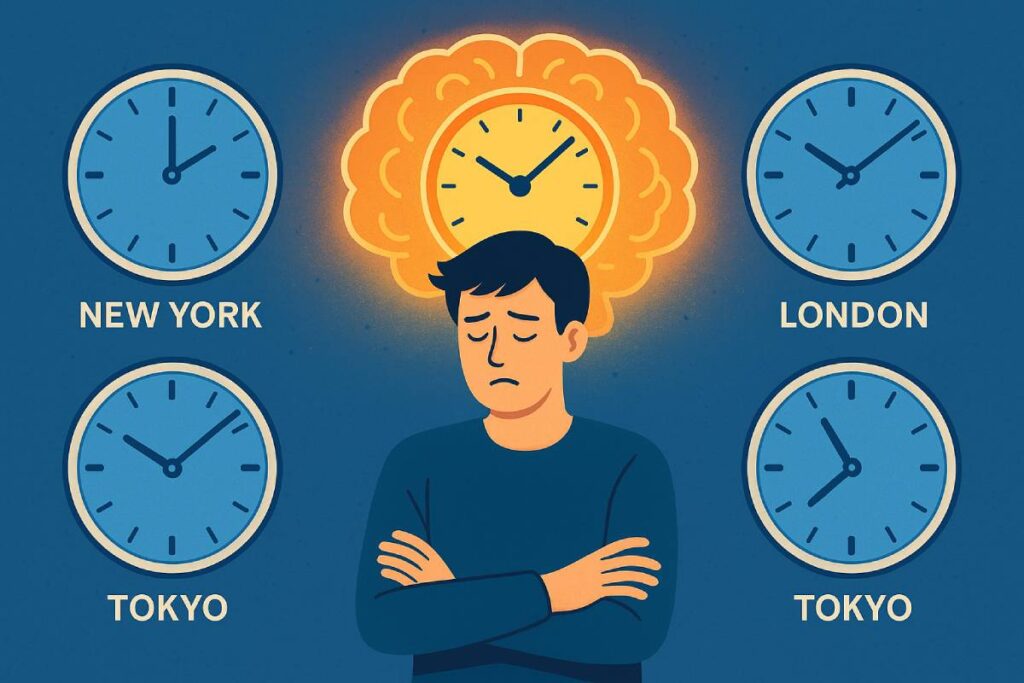
On top of that, the “first night effect” keeps one hemisphere of your brain on guard in unfamiliar environments, fragmenting sleep architecture. Psychological stress and travel anxiety elevate arousal, while altered routines—meals, light exposure, and ambient noise—further erode your ability to rest away from home.
Circadian Rhythm Disruption
Impact of Crossing Time Zones (Jet Lag Basics)
Jet lag occurs when travelers cross two or more time zones, causing a mismatch between their internal clock and the local time. For example, if you leave New York at 4 p.m. and arrive in Paris at 7 a.m., your body still thinks it’s 1 a.m., leading to daytime fatigue and nighttime alertness.
Circadian rhythms regulate sleep–wake cycles, hormone release, and metabolism, so rapid time-zone shifts disrupt these processes and lead to impaired sleep quality, mood disturbances, and cognitive deficits.
Role of the Suprachiasmatic Nucleus in Sleep–Wake Cycles
The suprachiasmatic nucleus (SCN), a cluster of hypothalamic neurons, serves as the body’s master circadian pacemaker by processing light signals through the optic nerves and modulating melatonin secretion from the pineal gland.
Disruptions in the SCN’s function—whether due to erratic light exposure or rapid travel—are linked to sleep disorders, mood dysregulation, and metabolic disturbances.
First Night Effect
Also known as the first-night effect (FNE), this phenomenon refers to the reduced sleep quality experienced during the first night in an unfamiliar environment. Individuals typically face longer sleep onset latency (SOL), increased wake after sleep onset (WASO), shorter total sleep time (TST), lower sleep efficiency, and reduced REM sleep on night one away from home.
Evolutionarily, FNE may serve as a protective mechanism: one hemisphere of the brain remains more vigilant to detect potential threats in new surroundings.
Psychological Factors
Travel Anxiety and Stress
Travel anxiety—the fear of unfamiliar places and the stress of trip planning—can manifest as persistent worrying, restlessness, and physical symptoms like a racing heart, all of which impair the ability to relax and fall asleep. Pre-travel stress has been shown to increase sleep latency and reduce sleep efficiency in the nights leading up to a trip.
Routine and Environmental Changes (Meals, Light, Noise)
Changes in meal timing disrupt the body’s peripheral clocks, further confusing circadian signals that coordinate digestion and sleep cycles; evidence suggests that strategic meal timing plays a critical role in re-entraining rhythms after long-haul flights. Erratic light exposure—particularly blue light from screens or cabin lighting—inhibits melatonin production and delays sleep onset.
Moreover, environmental noise—whether engine hum, city sounds, or unfamiliar hotel appliances—fragments sleep stages and reduces overall sleep satisfaction by increasing micro-arousals throughout the night.
Pre-Travel Preparation Strategies
Effective pre-trip preparation lays the groundwork for restful sleep on the road by shifting your body clock in advance, anchoring familiar bedtime cues, timing meals and fluids to support circadian rhythms, and calming the mind with proven relaxation techniques. Gradually moving your bedtime by 15–60 minutes nightly for several days helps your internal clock realign before departure.
Packing personal items like a pillowcase or blanket and sticking to your usual pre-sleep routine signals safety and comfort to your brain. Aligning meal times with your destination and staying well-hydrated—while limiting caffeine and alcohol close to bedtime—reinforces your body’s natural sleep–wake cues.
Finally, simple breathing exercises, mindfulness apps, and brief journaling can reduce pre-travel anxiety and prime you for deeper sleep.
Gradual Sleep Schedule Shifts
To minimize jet lag, start 3–5 days before departure by adjusting your bedtime by 15–60 minutes each night toward your destination’s time zone. If flying east, go to bed earlier; if flying west, delay bedtime later. Simultaneously, set your watch to the destination time and aim to eat meals in line with that schedule to reinforce the shift.
Sleep Hygiene and Familiar Routines
Bringing personal sleep items—your favorite pillowcase or a small blanket—creates a sensory link to home and reduces the first-night effect. Maintain the same pre-bed ritual you follow at home, whether it’s 20 minutes of reading, gentle stretching, or listening to calming music. These consistent cues help your brain transition to sleep mode, even in an unfamiliar setting.
Nutritional and Hydration Planning
Timing Meals to Support Circadian Cues
Eat meals at times matching your destination’s daytime hours to provide peripheral clocks with clear signals about when to be active or resting. Avoid heavy or large meals within two hours of your adjusted bedtime to prevent digestive discomfort that can disrupt sleep.
Importance of Hydration and Limiting Caffeine/Alcohol
Drink plenty of water before and during your journey to counteract cabin dehydration and maintain clear-headedness. Cut down on caffeine and alcohol at least 6 hours before your shift bedtime, as both substances interfere with sleep onset and quality.
Mental Relaxation Techniques
Incorporate 5–10 minutes of paced breathing exercises (e.g., box breathing) each evening to activate your parasympathetic nervous system and reduce cortisol levels. Use mindfulness or sleep apps such as Calm or Insight Timer for guided meditations and sleep stories to quiet an overactive mind.
Finally, brief journaling—spending 5 minutes listing thoughts or tasks for the next day—can offload mental chatter and signal that it’s safe to relax and drift off.
In-Transit Sleep Optimization
Optimizing your in-flight rest means taking control of your immediate surroundings, managing sensory inputs, keeping your body moving, and using sleep aids wisely. Choosing a window seat not only lets you lean against the fuselage for support but also keeps seatmates from disturbing you.
Maintaining airflow and adjustable lighting via the overhead vent helps counteract cabin dryness and keeps you comfortable. Blocking noise and light with earplugs, noise-canceling headphones, and a sleep mask creates a sleep-friendly cocoon, while portable white-noise machines or calming music apps further mask ambient disturbances.
Simple in-seat stretches like ankle circles prevent stiffness, and compression socks cut DVT risk by over 60% on flights longer than four hours. Finally, a low dose of melatonin (1–3 mg taken 1–2 hours before your intended sleep) can shave minutes off sleep onset, whereas prescription sedatives carry side effects like daytime grogginess and dependence, so they should be used sparingly.
Environment Control
Seat Selection Tips
- Window seat advantage: Lean your head against the cabin wall for stable support and avoid aisle traffic.
- Smoothest ride: Seats over the wings experience less turbulence, and exit rows offer extra legroom (though reclining may be limited).
Controlling Cabin Lighting and Airflow
- Overhead vent: Keep the personal air nozzle open to maintain humidity, protect your mucous membranes, and avoid drowsiness from stale cabin air.
- Balanced temperature: Direct the airflow toward your torso or feet rather than your face to stay comfortable without excessive drafts.
Noise and Light Management
Using Earplugs, Noise-Canceling Headphones & Sleep Masks
- Earplugs and noise-canceling headphones can reduce ambient engine hum and passenger noise by up to 30 dB, significantly improving sleep quality.
- A well-fitting sleep mask blocks overhead lights, enabling longer periods of uninterrupted darkness.
Portable White Noise or Calming Music
- Compact white-noise machines or smartphone apps (e.g., SimplyNoise, Relax Melodies) provide consistent sound masking to drown out sudden cabin noises.
- Calming playlists with binaural beats or nature sounds can further soothe anxious flyers and encourage drowsiness.
Movement and Circulation
In-Seat Stretches & Ankle Circles
- Perform ankle circles for 15–30 seconds every hour to boost venous return and reduce stiffness.
- Follow up with quadriceps and calf stretches in your seat to keep muscles flexible and pain-free.
Compression Socks for Long-Haul Risk Reduction
- Wearing graduated compression stockings on flights longer than four hours reduces the risk of symptomless DVT by over 60%.
- Combine socks with periodic walks down the aisle and hydration breaks for maximum protection.
Strategic Use of Sleep Aids
| Sleep Aid | Typical Dose | Timing | Notes |
|---|---|---|---|
| Melatonin | 1–3 mg | 1–2 hrs before sleep time | May reduce sleep latency by ~6 min; minimal side effects |
Melatonin Timing & Dosing
- Take low-dose melatonin 1–2 hours before attempting to sleep to align with your new time zone and reduce sleep onset latency.
- Evidence suggests melatonin speeds sleep onset by about six minutes but may not increase total sleep time.
Cautions on Prescription Sedatives
- Prescription hypnotics (benzodiazepines, Z-drugs) can cause daytime drowsiness, impaired balance, and habit formation; use only short-term and under medical supervision.
- Consult your doctor about interactions with other medications, the risk of complex sleep behaviors (sleepwalking, sleep driving), and rebound insomnia upon discontinuation.
Optimizing Your Hotel Room Sleep Environment
Optimizing your hotel room for sleep means creating a cool, dark, and familiar sanctuary while minimizing disruptions and ensuring fresh, comfortable air. Aim for a temperature of 60–67°F (15–19°C) to align with your body’s natural overnight cooling process.
Block external light completely with 100% blackout curtains and use dimmable or low-wattage lamps to signal your brain that it’s time to wind down. Bring a travel diffuser with lavender oil and pack a favorite pillowcase or blanket to anchor familiar sensory cues and reduce the “first-night effect”.
Limit screen-sourced blue light with blocking glasses or apps and switch off TVs and phones at least 30 minutes before bed to preserve melatonin production. Finally, combat dry hotel air with a small humidifier and ensure adequate ventilation to keep CO₂ levels low and promote restorative rest.
Room Temperature and Lighting
Ideal Sleep Temperature (60–67°F / 15–19°C)
A bedroom kept between 60 °F and 67 °F (15 °C and 19 °C) supports your body’s circadian-driven drop in core temperature, leading to deeper, less fragmented sleep. Cooler rooms also decrease wakefulness by reducing thermoregulatory stress on the body.
Blackout Curtains and Dimmable Lights
Installing 100% blackout curtains can block up to 99% of external light and reduce noise transmission, cutting nocturnal awakenings by as much as 25%. Pairing this with dimmable bedside lighting or low-wattage bulbs allows a gradual shift to darkness, which triggers melatonin release and smooths sleep onset.
Familiar Sensory Cues
Travel Diffuser with Lavender Essential Oil
Lavender aromatherapy has been demonstrated to calm the nervous system, extend slow-wave (deep) sleep, and improve overall sleep quality, without the side effects of pharmaceuticals.
Personal Bedding Items
Bringing a favorite pillowcase or a compact blanket provides both hygiene reassurance and tactile comfort, helping your brain recognize familiar cues and reducing first-night sleep disturbances by up to 40%.
Minimizing Screen Time and Distractions
Blue-Light Blocking Glasses or Apps
Blue-light filtering lenses or screen-filter apps preserve melatonin secretion, improving sleep onset latency by about 10–15 minutes in evening device users.
Turning Off TVs and Silencing Phones
Disabling in-room TVs and silencing smartphone notifications at least 30 minutes before bedtime reduces cognitive arousal and prevents light spikes that fragment sleep.
Humidity and Air Quality
Small Travel Humidifier
A portable humidifier combats dry hotel air—common in HVAC-controlled rooms—by maintaining moisture levels that prevent nasal and throat irritation, leading to fewer nightly awakenings.
Ventilation
Ensuring proper air exchange—either by using the room’s ventilation system or briefly opening a window—keeps CO₂ concentrations below 1000 ppm, which is linked to better sleep efficiency and reduced next-day grogginess.
Jet Lag Prevention & Management

Jet lag results from a misalignment between your internal circadian clock and the local time after crossing time zones.
Airlines like Qantas now leverage timed blue-enriched lighting and meal schedules on ultra-long-haul flights to help passengers adjust more smoothly. Strategic light exposure, short naps, and properly timed melatonin can accelerate circadian re-entrainment by up to 1–2 hours per day.
Keeping naps under 30 minutes alleviates daytime sleepiness without compromising nighttime rest. Chronopharmacological use of melatonin complements light therapy to align your sleep–wake cycle more rapidly and reduce jet lag symptoms.
Strategic Light Exposure
Strategic light exposure harnesses the suprachiasmatic nucleus’s sensitivity to specific wavelengths and intensities of light to shift your circadian phase.
• Morning light advances the clock, aiding adaptation for eastward travel.
• Evening light delays the clock, benefiting westward journeys.
Bright light therapy—using 1,200–3,000 lux for 30–120 minutes—can induce phase shifts of 1–2 hours per day. Avoiding light at counterproductive times prevents unwanted phase delays and reinforces the desired shift.
Nap vs. Full Sleep Decisions
Short naps under 30 minutes can alleviate acute daytime sleepiness after long-haul travel without impairing nighttime sleep quality. Napping at least eight hours before your adjusted bedtime reduces sleep inertia and preserves your nighttime sleep drive.
If you arrive near local nighttime, avoid naps and stay awake until your normal bedtime to accelerate circadian alignment. Conversely, a planned 20–30-minute nap upon morning arrival can boost alertness for the first half of the day.
Melatonin and Chronopharmacology
Melatonin follows a phase response curve opposite to that of light—taken 1–2 hours before target sleep, it advances rhythms, while morning dosing delays them. Clinical guidelines recommend 0.5–3 mg of melatonin 1–2 hours before desired sleep to shorten sleep onset latency by approximately 6–12 minutes.
Combining melatonin with bright light exposure maximizes re-entrainment speed, delivering up to 30 % faster adjustment compared to either intervention alone. Always consult a healthcare provider before using melatonin, especially if you have underlying health conditions or take other medications.
| Melatonin Dose | Timing | Expected Effect |
|---|---|---|
| 0.5–3 mg | 1–2 hours before target sleep | Phase advance for eastward travel |
| 0.5–3 mg | Morning upon awakening | Phase delay for westward travel |
The table above summarizes recommended melatonin dosing strategies for jet lag prevention and management, integrating chronopharmacological principles.
Natural Remedies and Supplements
Travelers often turn to natural remedies and supplements to combat insomnia without relying on prescription medications. Herbal aids like valerian root and chamomile tea can gently promote relaxation and sleep onset, while other botanicals—lavender, lemon balm, and passionflower—offer complementary calming effects.
Nutritional supplements such as magnesium, L-theanine, tart cherry juice, and CBD support muscle relaxation, reduce stress, and supply melatonin precursors for deeper rest. However, herbal and nutritional approaches carry risks of interactions, side effects, and contraindications—especially when mixed with other medications or in vulnerable populations—so always consult a healthcare professional before combining or beginning any new regimen.
Herbal Aids
Valerian Root: Dosage and Precautions
Most research studies use 300–600 mg of valerian root once daily, ideally taken 30–60 minutes before bedtime. Start with a low dose and increase gradually under medical guidance to gauge tolerance.
Common side effects include headache, dizziness, stomach upset, or paradoxical stimulation; avoid if pregnant, breastfeeding, or if you have liver disease. The American Academy of Sleep Medicine does not formally recommend valerian for insomnia due to inconsistent evidence, so long-term use beyond four weeks should be supervised by a clinician.
Chamomile Tea Ritual: Benefits and Preparation
Chamomile contains apigenin, an antioxidant that binds to GABA receptors in the brain, reducing anxiety and promoting relaxation. Studies suggest it can improve mild insomnia when integrated into a calming bedtime routine. To prepare, steep 1–2 teaspoons of dried chamomile flowers in 8 oz of hot water for 5–10 minutes, then strain and sip slowly as part of your wind-down ritual.
Other Teas: Lavender, Lemon Balm & Passionflower
- Lavender: Aromatherapy and oral preparations can reduce anxiety, and may cause headache or gastrointestinal upset in some users.
- Lemon Balm: Lessens symptoms of worry and excitability; usually well-tolerated but can cause nausea.
- Passionflower: May help with anxiety and insomnia; available as tea or tincture, though the evidence is mixed and can cause drowsiness or confusion.
Table: Common Herbal Sleep Aids
| Supplement | Typical Dose | Precautions |
|---|---|---|
| Valerian Root | 300–600 mg before bed | Headache, dizziness; avoid if pregnant or with liver disease |
| Chamomile Tea | 1–2 tsp flowers | Rare allergic reactions; limit to 1 cup to avoid diuresis |
| Lavender | 80–160 mg extract | May cause GI upset; not for children or pregnant users |
| Lemon Balm | 300–600 mg extract | Possible dizziness; avoid sedatives |
| Passionflower | 250–500 mg extract | Possible dizziness; avoid with sedatives |
| Sources: Sleep Foundation, Mayo Clinic, Verywell Mind |
Nutritional Supplements
Magnesium
Magnesium activates GABA receptors to calm the nervous system; best taken 1 hour before bedtime, with typical doses of 200–400 mg nightly. While evidence on sleep improvement is mixed, it supports muscle relaxation and stress reduction.
L-Theanine
This amino acid (100–200 mg) increases GABA and dopamine levels, reducing stress and promoting relaxation without sedation; generally safe, but consult a provider if pregnant or on blood pressure medication.
Tart Cherry Juice
Consuming 8–12 oz of tart cherry juice or 1–2 oz concentrate provides natural melatonin and tryptophan, improving sleep duration and efficiency in adults with insomnia.
CBD Overview
CBD may reduce anxiety by modulating the endocannabinoid system; preliminary studies show improvements in sleep and anxiety symptoms over one month, but more research is needed.
Table: Key Nutritional Sleep Supplements
| Supplement | Serving/Dose | Main Benefit |
|---|---|---|
| Magnesium | 200–400 mg before bed | Muscle relaxation, GABA activation |
| L-Theanine | 100–200 mg | Reduces anxiety, enhances GABA/serotonin |
| Tart Cherry Juice | 8–12 oz juice | Anxiety reduction may aid sleep |
| CBD | 20–40 mg oil | Anxiety reduction, may aid sleep |
| Sources: Health.com |
Safety and When to Consult a Professional
- Contraindications & Interactions
Herbal supplements can interact with heart medications, sedatives, and blood thinners, potentially causing serious effects; always check interactions via a reputable tool (e.g., WebMD’s Interaction Checker) before use. - Professional Guidance
Even “natural” sleep aids carry risks. The Sleep Foundation recommends consulting a healthcare provider before starting any new supplement, especially if you take other medications or have chronic health conditions. - Signs to Seek Medical Advice
Discontinue use and seek medical attention if you experience severe side effects—such as persistent headache, dizziness, gastrointestinal distress, allergic reactions, confusion, or worsened insomnia—particularly after taking valerian, chamomile, or passionflower.
By strategically integrating these natural remedies and supplements—and respecting dosing guidelines, interactions, and individual health considerations—travelers can enhance their chances of restful sleep away from home. Always tailor choices to your unique needs and consult a professional for personalized recommendations.
Quick Fixes vs. Long-Term Strategies
Travelers need both “in-the-moment” tactics to quell sudden wakefulness and lasting habits that keep their sleep system robust across frequent trips. Quick fixes—like a 4-7-8 breathing cycle or a tiny tryptophan-rich snack—can knock off those first restless minutes, while longer-term strategies—consistent pre-trip routines, chronotherapy apps, and nutrient-rich diets—build resilience against travel insomnia.
Combining both approaches, supported by visual tools like checklists and reference cards, empowers any traveler to reclaim restorative rest, whether they’re stranded overnight or managing a globe-trotting lifestyle.
Immediate Tactics for Sudden Sleepless Nights
- 4-7-8 Breathing Exercise: Inhale for 4 seconds, hold for 7, exhale for 8—activate your parasympathetic system to calm racing thoughts.
- Progressive Muscle Relaxation: Tense and relax muscle groups from toes to head; studies show this can reduce sleep latency by up to 15 minutes.
- Light Snack of Tryptophan-Rich Foods: A small portion of turkey or yogurt boosts serotonin production, gently easing drowsiness without spiking blood sugar.
- Cool-Down and Eye Mask: Lower your core temperature by removing socks or using a fan, and don a light-blocking mask to reinforce the darkness signal.
- Brief Walk or Stretch: A 5-minute hallway stroll combined with ankle circles can reset circulation and relieve restlessness.
- Guided Sleep Sounds: Apps like BetterSleep offer curated white noise or nature tracks to drown out unfamiliar hotel noises and promote steady sleep.
Table 1: Quick-Fix Sleep Tactics
| Tactic | Effect | When to Use |
|---|---|---|
| 4-7-8 Breathing | Lowers heart rate & anxiety | Lowers heart rate & Anxiety |
| Progressive Muscle Relaxation | Reduces muscle tension, speeds sleep onset | If tension or racing thoughts |
| Tryptophan Snack | Boosts serotonin, mild sedation | >30 minutes before trying to sleep |
| Eye Mask + Cool-Down | Enhances melatonin release by simulating night | On waking in bright/noisy rooms |
| Short Walk/Stretch | Improves circulation, reduces stiffness | After 20 minutes of tossing/turning |
| Guided Sleep Sounds | Provides consistent auditory masking | When ambient noise is disruptive |
Building Sustainable Sleep Health for Frequent Travelers
Frequent flyers benefit from regular pre-trip routines—gradual sleep shifts, scheduled light exposure, and consistent meal times—to keep their circadian rhythm anchored. Integrating chronotherapy apps like Timeshifter, which over 96 % of users report reduces jet lag severity, personalizes light and sleep schedules based on your itinerary and chronotype.
Nutritional support—daily magnesium (200–400 mg) for GABA activation, and tart cherry juice for natural melatonin, reinforce deeper, slow-wave sleep in the long run. Finally, maintaining consistent sleep hygiene—ca ool room, blackout setup, and a brief wind-down ritual—prevents the “first-night effect” from becoming a chronic roadblock.
Visual Aids & Resources
- Downloadable “Travel Sleep Checklist” Infographic: A one-page visual guide covering pre-trip, in-flight, and post-arrival actions (e.g., sleep shifts, quick fixes, room setup).
- Before/During/After Travel Quick-Reference Cards: Pocket-sized prompts for immediate tactics (breathing, snack ideas) and reminders of long-term habits (meal timing, app schedules).
- Links to Recommended Sleep Apps and Products:
- Timeshifter: Personalized jet-lag mitigation plans
- BetterSleep: Sleep tracking & premium soundscapes
- Calm / Insight Timer: Guided meditations & sleep stories
- Compression Socks & Travel Pillow: From Condé Nast Traveler’s long-haul comfort kit
- Magnesium Glycinate Supplements: To support nightly muscle relaxation
By blending these immediate tools with sustainable practices—and leveraging clear, portable visual aids—travelers can mitigate sudden sleepless bouts and maintain healthy sleep patterns trip after trip.
Conclusion
By understanding the dual engines of travel insomnia—circadian misalignment and the first-night effect—you’re equipped to head off sleepless nights before they start. Pre-trip bedtime shifts and mealtime scheduling reprogram your internal clock while packing home comforts (pillowcase, diffuser) tames novelty anxiety. On the plane, claim a window seat, manage airflow, and mask disruptions with noise-canceling gear for a cocoon of calm.
Arriving at your destination, set the room to 60–67°F, draw blackout curtains, and limit screens to trigger melatonin naturally. Complement these tactics with short-acting remedies—melatonin or gentle herbs—and in-moment fixes like 4-7-8 breathing and progressive muscle relaxation to power through unexpected wakefulness. Finally, sustainable tools—chronotherapy apps, consistent routines, nutrient support—build resilience so every trip feels like home.
FAQs
What causes travel insomnia?
Disrupted circadian rhythms (jet lag), the “first-night effect” in new environments, and travel-related anxiety all fragment sleep.
How can I adjust my sleep schedule before flying?
Shift your bedtime 15–60 minutes toward your destination’s time zone 3–5 days before departure and align meals accordingly.
Are herbal sleep aids safe for travel insomnia?
Valerian root (300–600 mg) and chamomile tea are generally safe short term but may interact with meds; consult your doctor if pregnant or on prescriptions.
Does melatonin really help with jet lag?
Low-dose melatonin (0.5–3 mg) taken 1–2 hrs before sleep can shorten sleep-onset latency by ~6 minutes and aid phase shifts.
Which airplane seat is best for sleep?
Window seats improve sleep quality by ~40%, offering support to lean on and fewer aisle-traffic disruptions.

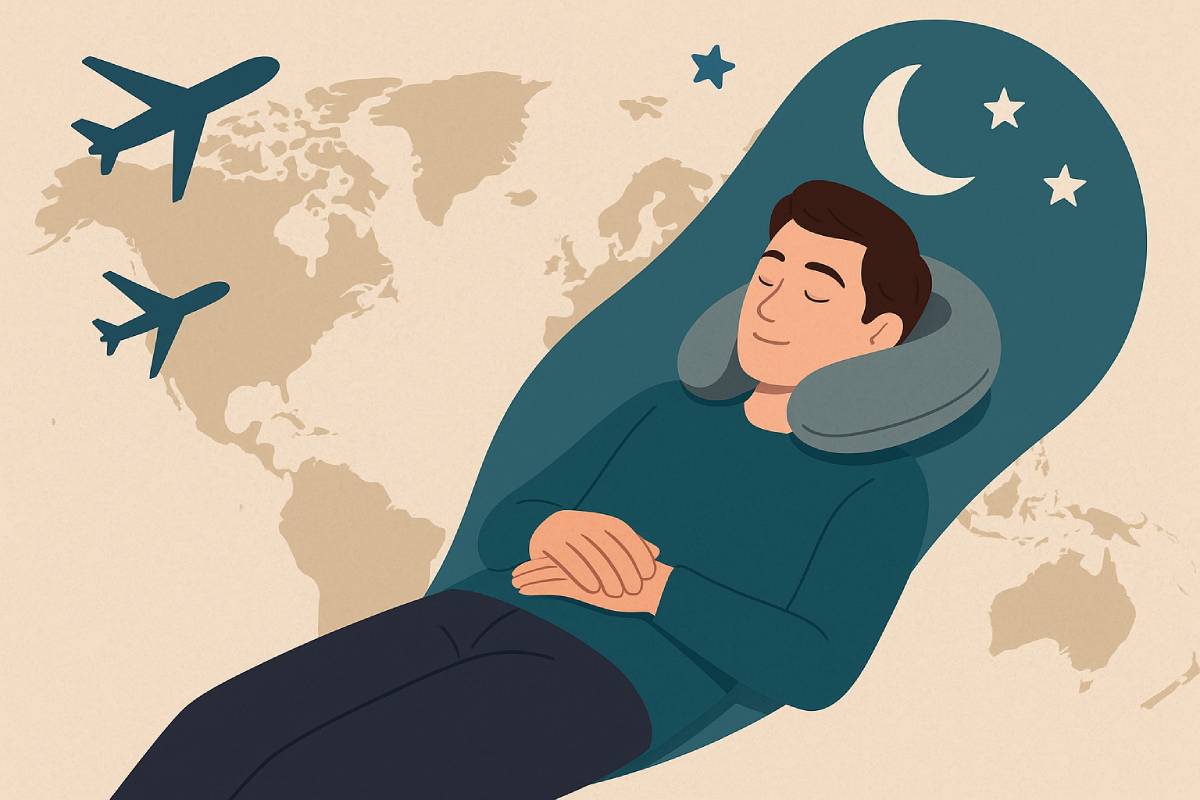

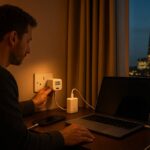













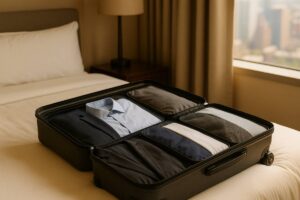
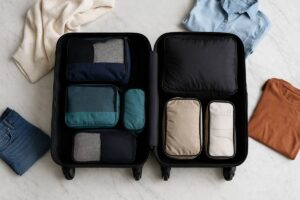
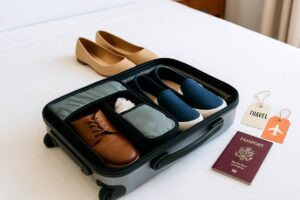
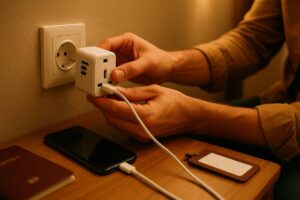
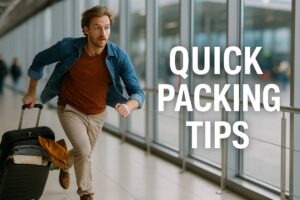
Thanks for sharing, Emma! Melatonin supplements (0.5–3 mg) can reduce sleep-onset latency by roughly 6 minutes and boost total sleep time, making them a proven aid for travel insomnia. Research also shows chelated magnesium—like glycinate—offers high bioavailability, activates GABA pathways, and promotes deeper, more restorative sleep. Your combo is a smart, science-backed way to reclaim quality rest on the road!
I have such problem, and what always helps me is taking melatonin and some magnesium glycinate supplement http://www.amazon.com/Magnesium-Glycinate-500-Absorption-Supplements/dp/B0BXYDMKVG. It helps me to have a deep restoring sleep even if I’m traveling.